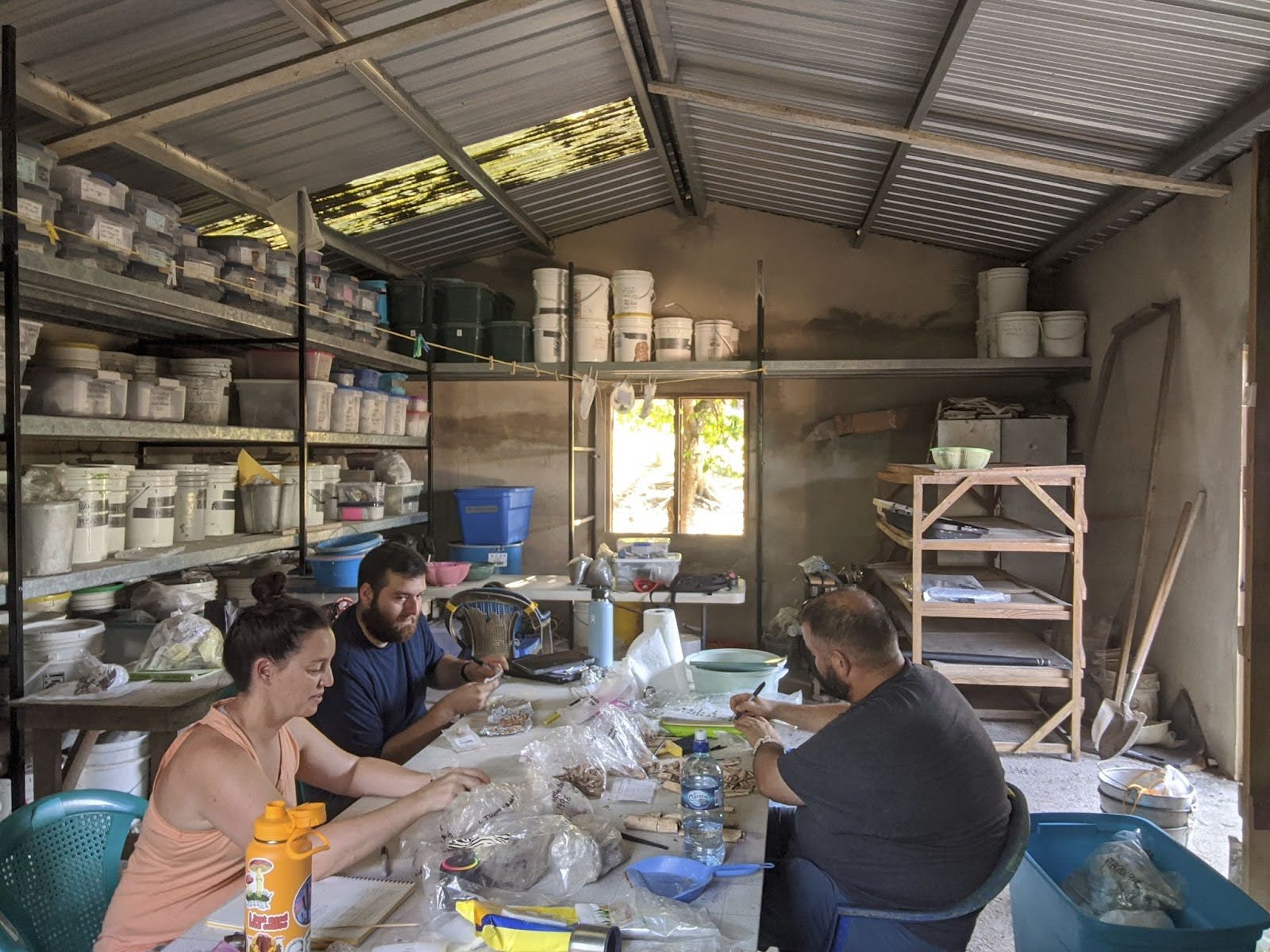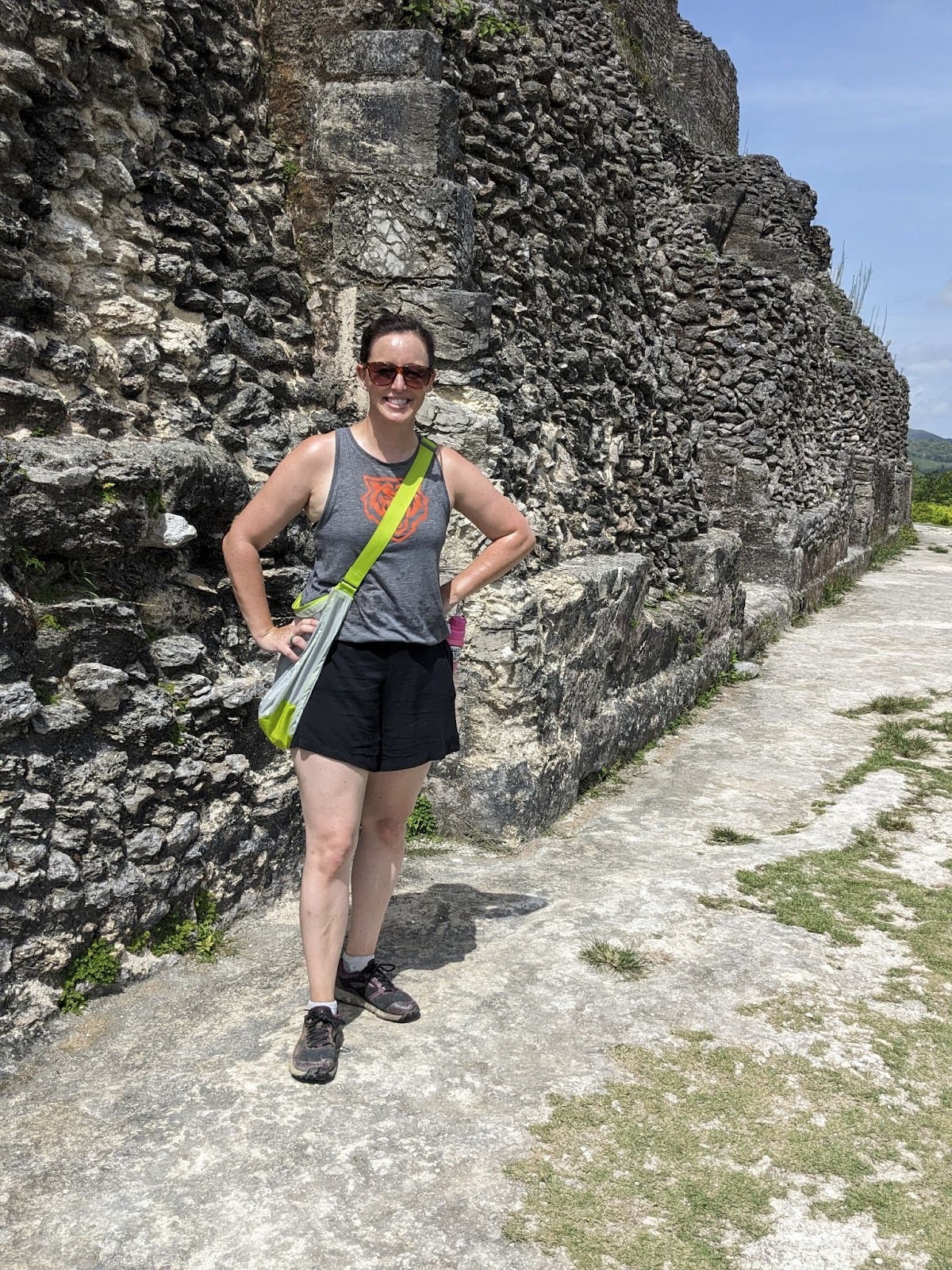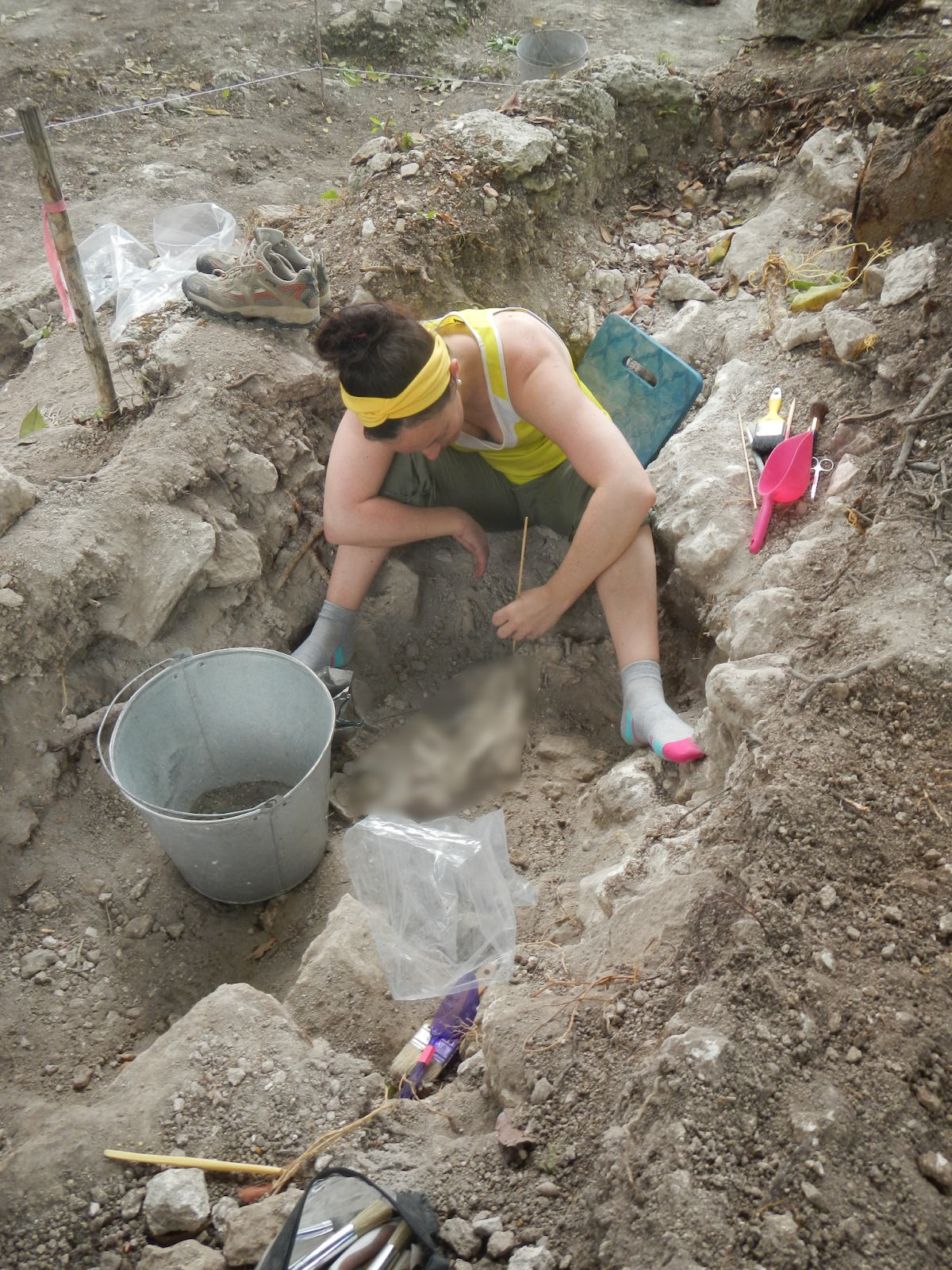ISU Brings Collaborative Bioarchaeology to Belize

Working in the Cahal Pech field lab, San Ignacio Belize, June 2023
Elisabeth Curtis
December 17, 2024
Bioarchaeology helps us learn about the past by connecting communities today with people and cultures from long ago.
However, sometimes efforts to share this knowledge don’t fully include local communities or help them take part in preserving their history. In Belize, interest in Maya history is strong, but collaboration between researchers, the tourism industry, and local communities—especially young Belizeans passionate about their heritage—is lacking.
Kirsten Green Mink, PhD, Assistant Professor of Anthropology at ISU, along with colleagues from the University of South Dakota and Galen University in Belize, has been awarded a Wenner-Gren grant to host a workshop in Belize in summer 2025. The Wenner-Gren Foundation supports anthropological research worldwide, advancing cultural, biological, linguistic, and archaeological studies through innovative projects.
The workshop aims to create an infrastructure for training Belizeans in bioarchaeology, by bringing together Belizean and Maya students from Galen University, professionals, government officials, and U.S. students. Over three days, participants will gain practical skills in bioarchaeology. The event will also foster a long-term network for continued collaboration in Maya bioarchaeology. The workshop will help more people in the region take part in protecting and sharing their history.
Dr. Mink began her work in Belize in 2013 while completing her PhD. “When I was looking for ways to expand my research, outreach, and engagement I started noticing there aren’t any Belizean bioarchaeologists,” she says. “Bioarchaeology programs are not available in Belize, forcing interested students to seek education abroad if they can.” This realization inspired her to develop a workshop to bring resources and training directly to Belize.
“If we can bring the information and resources to them, then in a few years, there will be Belizeans trained in bioarchaeology, running their own research,” Mink said
The workshop has three core components:
- Laboratory Training: Participants will work in a lab brought to Belize by Mink’s team.
- Field Excavation: They will practice excavation techniques using simulated burial sites.
- Cultural Collaboration: They will engage with modern Maya communities to incorporate their voices and perspectives.
Cultural Anthropologist, Dr. Crystal Sheedy from USD, will lead discussions on incorporating Maya voices into the interpretation of the past and addressing the themes and questions communities care about.
“The researcher has an idea of what they want to learn,” Mink says, “but you’re doing it right when you engage with the community and ask what they want.”
Although not all Belizeans are of Maya descent, Maya history and culture is embraced as a shared national identity and the Belizean government has created a united vision of its heritage for all of its citizens. “When Belizeans talk about Maya culture, even if they’re not of Maya descent, they see it as part of their culture, history, and identity,” Mink says. “They have a vision of a united culture and united heritage. Burial sites are very exciting for the folks living in Belize, and those traveling to visit.”
“As anthropologists we have to ask the people,” she says. To ensure that the interests of the Belizean people are respected, the Belize Valley Archaeological Reconnaissance (BVAR) Project, of which Dr. Mink is a faculty researcher, has conducted hundreds of surveys with local community members. Mink says the surveys are clear: people hope to find burials to help them understand how their ancestors lived and tell the stories of how they were resilient, smart, and did incredible things.
“We know that they want us to excavate and do various analyses,” she says. “They want to know about their ancestors. They find it fascinating to get to participate in that. It makes what we do feel more meaningful because the people want to know it.”
In Belize, where tourism is a significant part of the economy, especially at Maya archaeological sites, the workshop could also enhance the knowledge and skills of tour guides. Tour guides in Belize are highly educated, and providing them with bioarchaeological insights would add value to the industry and enrich visitors’ understanding of Maya culture.
Long-term, Mink envisions handing the workshop over to Galen University, which can continue offering workshops or can build it as part of their curriculum. She hopes to see graduates with bioarchaeology training from Belize who might even pursue advanced degrees at ISU.
“This grant and workshop are a step toward creating a future where Belizean researchers lead bioarchaeological studies in their own country,” Dr. Mink said. “We will create a long-term network for working together on Maya bioarchaeology. This workshop will help more people in the region, especially researchers of Maya descent, protect and share their history.”

At the Classic Maya site of Xunantunich, Succotz, Belize June 2024

Maya Classic Period site of Xunantunich 2017
